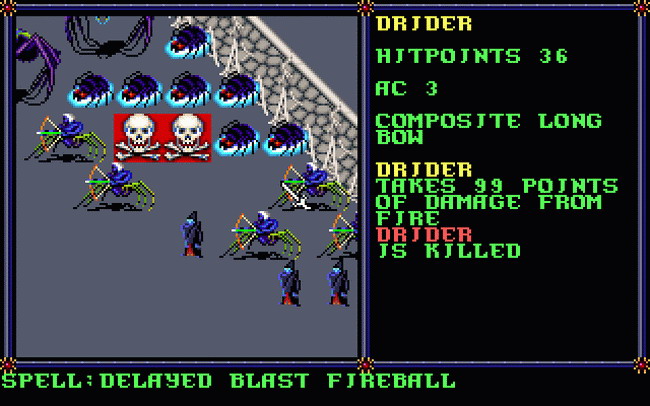In the early days of computer and console role-playing games, turn-based combat was the norm. This was not a compromise imposed by technological constraints, as one might suspect. Most early computer and console video games, influenced by the arcade, were twitch-based action games. Including real-time combat in an RPG would have been no more difficult than including it in any other genre. Early RPGs like Wizardry, Might & Magic, Ultima, and The Bard’s Tale adopted the turn-based combat mechanic by choice, because their designers took their cues from pen-and-paper RPGs like Dungeons & Dragons, which employed turns and dice rolls to simulate combat. This design resulted in combat systems that challenged a player’s ability to build and develop characters, and to think tactically in battle, rather than relying on fast reflexes and gamepad (or, at the time, joystick) mastery.
Some of these games, like The Bard’s Tale, presented turn-based combat as a series of menu choices. The player would consider the strength and number of the enemy, the hit points and supplies of his or her party, and then select (for example) to Attack, Defend, Cast Spell, or Flee. Other RPGs, like Ultima 3 and SSI’s Gold Box series of AD&D games, presented combat on a separate battle screen, where the player and the computer took turns moving party members and enemies around a map like figurines in a tabletop war game.
Read the rest of this entry »
